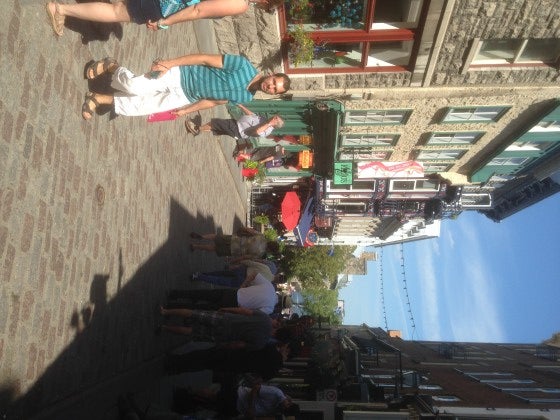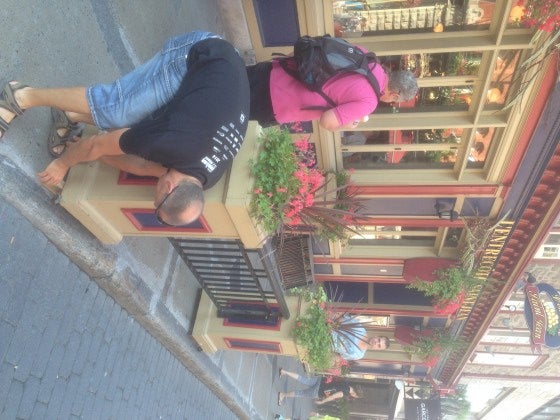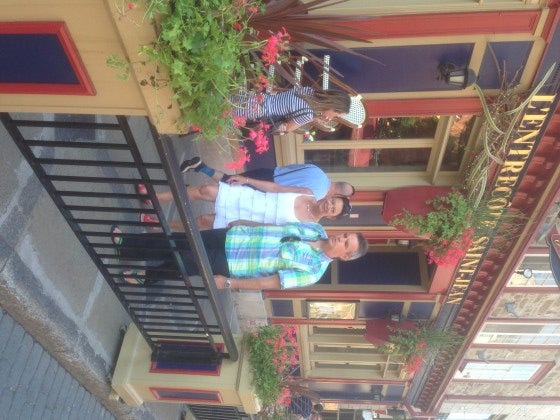When I travel, I love to just hang out and observe urban life – how cities support the predispositions of their residents and how city dwellers embrace their environments. I’m happy as a clam watching how crowds behave and spying on urban pedestrian life. Such was this case a couple of months ago when I visited Quebec City. I kept asking myself: why is it so enjoyable to be in a place that has great street life? Why is it so pleasant to be in an environment where people are just doing an amalgamation of everyday activities?
I was in Quebec City for a few days of business meetings and was impressed by its street life in the old part of the city. I had been there decades ago and had fond memories of this compact little bit of urban life that had, if anything, improved through the years.


I have a long history on the subject of street life. When I was right out of school, I was hired by Stanford Anderson at MIT to assist in his extensive research project on the subject. We did meticulous observation, mapping and analysis in Paris and Brooklyn Heights (which were very positive examples) and in downtown Washington DC (where things were pretty much falling apart). The research led to Stan’s remarkable book, “On Streets”.
I was 24 at the time, and was mesmerized by how societies have – for centuries – made these complex crucibles of cultural interaction we call streets. Being in Quebec made me think about what’s happened in the 40 years since those days at MIT. In 1973 – apart from San Francisco and New York City – we had pretty much given up on street life in the U.S. and nobody wanted to hang out in the city. Car-dominated culture, the suburbs, and TV were being regaled as creating a death knell for urban pedestrian life.
Now there is a remarkable resurgence of urbanity even in many places that are surprising—like Austin. But I think we still have many lessons to relearn from cities that never lost their urbanity, some in North America, like Quebec City.



One afternoon in Quebec City, I witnessed a remarkable bit of urban theater – the quick transformation of a single street in the old quarter. In a period of 15 minutes it went from a car street with a sidewalk to a 100% pedestrian corridor with generous outdoor social settings/restaurants and no cars. The photos here show the quick installation of planters and rails and the relocations of the pedestrian path they provoked. With these modest interventions, what was needed as a car route during business hours became a festive pedestrian party space in the evening. It is these kinds of subtle design moves that contribute to making urban spaces that are truly successful and engaging.




St. Louis, Oklahoma City, Los Angeles and many others places are now trying to rejuvenate the kind of urban life that has been continuously present in Quebec City all along. How did we lose it in so many North American cities? Was it really the TV of the Marshall McLuhan era? Curiously, we now have far more technology than McLuhan anticipated and yet more people are hanging out enjoying urban life. Maybe it’s because we all really need to be in-person social creatures. Even with the ease and mobility of today’s social media, people are still drawn to public places.
In the 1970’s, Charles Moore wrote an article called “You Have to Pay for the Public Life,” in which he hailed Disneyland as one of the best experiences of public life in the United States. Moore’s piece was both humorous and biting. Now urban life is reappearing everywhere. We need to be encouraging, celebrating and provoking more of this direction as best we can.
